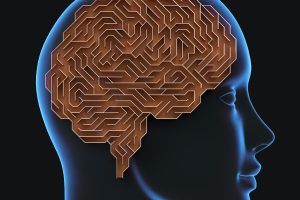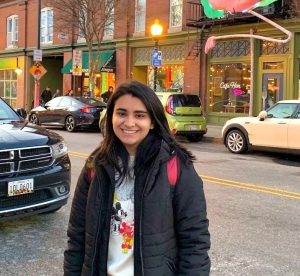
They say that what you see is what you get. But is it really? Computer science and cognitive science double major Shreya Wadhwa wants to find out. Supported by a Provost’s Undergraduate Research Award (PURA), the second year student is exploring whether cognitive science applications can be used to train the human eye to see certain images differently.
 “As humans, we must routinely recognize the objects we interact with, and the places we navigate. Is this an apple or a banana? Is this the kitchen or the living room? Several decades of research in cognitive neuroscience have found that the brain has regions dedicated to recognizing scenes and objects, and these regions show sensitivity to the natural visual statistics of certain categories,” said Wadhwa. “A crucial unanswered question, however, is how this sensitivity develops and how flexible it is?”
“As humans, we must routinely recognize the objects we interact with, and the places we navigate. Is this an apple or a banana? Is this the kitchen or the living room? Several decades of research in cognitive neuroscience have found that the brain has regions dedicated to recognizing scenes and objects, and these regions show sensitivity to the natural visual statistics of certain categories,” said Wadhwa. “A crucial unanswered question, however, is how this sensitivity develops and how flexible it is?”
Wadhwa and a team of engineers are training research participants using computer-generated, realistic 3D stimuli with consistent (curvy objects, rectilinear scenes) and inconsistent (rectilinear objects, curvy scenes) feature-category mappings. They plan to then test for changes in how participants categorize what they are seeing.
“Once we know exactly how humans see and why they see what they see, we can test for the same in computational models of vision and maybe even train them to do the same,” said Wadhwa.
Wadhwa’s research interests lie at the intersection of computer science and cognitive science, specifically computer vision, artificial intelligence, and vision. She is currently working in the Bonner Lab under the guidance of Michael F. Bonner, assistant professor of cognitive science and Alon Hafri, postdoctoral research fellow of cognitive science and psychological & brain sciences. “The experience and skills that I have gained along with the connections that I have made in the lab are invaluable,” said Wadhwa.
Her faculty adviser is Benjamin Langmead, associate professor of computer science.
Provost Joseph Cooper (1991-1995) established the PURA program in 1993 with an endowment by the Hodson Trust. The program was created to support and encourage Hopkins undergraduate students to engage in independent research, scholarly and creative projects.